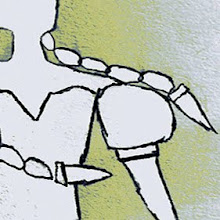All photos © Richard Pare, English photographer known for his work documenting Soviet modernist architecture.
Burevestnik Factory Club in Moscow by architect Konstantin Melnikov. The Club, built in 1929-32, was commissioned by the cooperative of the Burevestnik shoe factory.
Centrosoyuz or Tsentrosoyuz Building is a government structure in Moscow, constructed in 1933 by Le Corbusier and Nikolai Kolli.
Chekist Communal House (photo --» 2002)
The Chekist Communal House was designed by Aleksandr Typikov in Nikzhni Novgorod (1929-32) for the Cheka, the secret police that will become the KGB.
Chekist Communal House
Chekist Communal House
Communal House of the Textile Institute, designed by Ivan Nikolaev, was erected in 1929-1931 in the Donskoy District of Moscow.
Izvestia Building was built in 1926–27 and designed by Grigori Barkhin in Moscow.
Izvestia, still a Russian daily newspaper, was the official newspaper of the Soviet government (in contrast to Pravda which was the Party newspaper).
The Izvestia building in Pushkin Square was built 10 years after the Revolution to house both the offices and printing presses of Izvestia and other papers.
The building facade is heavily glazed and asymmetrical in the Constructivist style.
Kirov Physiotherapy Institute in Leningrad
Lensoviet Communal House (photo --» 1999)
Melnikov House (1927) by architect Konstantin Melnikov in Moscow
Palace of Culture in the Proletarian District (1931-37) in Moscow by architects Alexander and Victor Vesnin (photo --» 1995).
Pravda building (finished 1935) in Moscow by architect Panteleimon Golosov. Pravda is a Russian political newspaper associated with the Communist Party of the Russian Federation.
Red Banner Textile Factory in Leningrad was designed by Erich Mendelsohn and built in 1926–1937.
Erich Mendelsohn incorporated abstract forms and concrete into his designs to evoke an imposing sense of practicality and the here-and-now. The architect’s avant-garde vision complimented Constructivism’s geometric and conservative style that emerged from the Soviet Union in the 1920s.
Redefining Constructivism Today: The Red Banner Textile Factory
The Rusakov Workers' Club in Moscow is a notable example of constructivist architecture. Designed by Konstantin Melnikov, it was constructed in 1927-28.
The VTsIK Residential Complex in Moscow by architect Boris Iofan.
Water Tower for the Socialist City of Uralmash by architect Moisei Reisher, 1929.
The Zuev Workers’ Club in Moscow is a prominent work of constructivist architecture. Designed by Ilya Golosov, the club was built in 1927-29 and housed various facilities to educate and entertain Moscow workers.
Zuev Workers Club (1928) by Illya Golosov
Source: theconstructivistproject



















